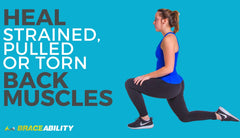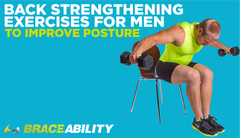Managing Lymphedema
Managing Lymphedema: A Guide to Understanding and Treatment
Lymphatic swelling is caused by a blockage that occurs in the lymphatic system. It often occurs in the arms or the legs, painfully impeding day-to-day activities. But you can learn how to take back your life from lymphedema and start on your journey to comfort.
What is Lymphedema?
Lymphedema is when tissue swells because of a blockage of fluid that is usually drained by the body’s lymphatic systems. Simply put, it occurs when the body is unable to drain excess fluid because of a damaged or blocked lymph node.

Lymphedema can be expressed in two ways: primary and secondary. Primary lymphedema is caused genetically, and secondary lymphedema is caused by an external force, such as surgery or cancer. You can learn more about primary vs. secondary lymphedema. Either way, it causes much discomfort and swelling to the host
Common Symptoms
Some commonly experienced symptoms include tingling, achiness, or feelings of fullness, as well as noticeable swelling of the affected area.
These symptoms can be easily written off, so it is important to remain diligent in identifying them. It’s important to see a doctor if the swelling in the arm or leg is persistent, or if already diagnosed, there is a sudden and dramatic increase in the size of the limb.
3 Practical Approaches to Lymphedema Treatment
1. Physical Therapy
(three easy exercises you can do at home!)
Physical therapy exercises can easily help reduce lymphatic swelling. Muscles act as pumps for lymphatic fluid, so by focusing on strength and flexibility, the power of this pump is increased.
Before starting any of the exercises, it is recommended to do some deep breathing to promote the flow of lymph fluid and to relax the body.
Exercise one: Neck Rotations
Neck rotations are useful to activate the head and neck lymph nodes. Neck rotations can be done by standing straight and looking to the left, then back center, then to the right. Repeat this exercise for 8-10 cycles.

Exercise two: Bicep Curls (arms)
Bicep curls will help loosen the arms and can reduce swelling that is present. Stand up straight with your arms at your sides and palms facing forward. Then, bending at the elbow, bring your hands up until you can touch your fingertips to your shoulders. Repeat 8-10 times. 1-2 pounds of weight can be added to this exercise if tolerable.

Exercise three: Calf Pumps (legs)
Calf pumps are a gentler exercise that can be done sitting in a chair or bed. Calf pumps involve flexing the calf muscle, which can be done by pointing your toe and pumping the feet back and forth. Repeat 8-10 times with each leg.

2. Skincare Routine
Maintaining a good skincare routine is essential to managing lymphedema. Any injury or infection sustained has the potential to make lymphedema symptoms worse. Infection or injury that occurs can damage the lymphatic system of the area even further.
Having lymphedema may mean you are at risk of developing cellulitis, which is a painful bacterial skin infection, making skincare all the more important.
The first step in a good routine is daily self-checks of your skin. Be on the lookout for any bumps, rashes, cracks, or signs of a potential infection.
Use a specialized soap to wash the areas affected by lymphedema. Always use a mild emollient soap. Using a soap that contains an emollient, such as aloe, softens and soothes the skin. Make sure you wash all the soap effectively because leftover soap can cause dryness.
Be mindful of towel and washcloth usage. To avoid infection, never share these items with someone else. Pat dry any affected areas to prevent irritation, making sure to get all of the moisture out from the skin folds.
Use a good moisturizer to prevent dryness and irritation in the skin. Make sure to use a low-pH moisturizer, which helps maintain the skin’s elasticity and protective barrier.
Make sure to use products such as insect repellent and sunscreen when needed. If the skin gets cut, wash with clean water and apply an antiseptic cream. For foot care, use anti-fungal powder or alcoholic wipes to treat signs of and prevent infection.
3. Compression Therapy
Compression therapy means wearing compression sleeves on your arms or legs to reduce your edema. Compression therapy is a part of Complete Decongestion Therapy, or CDT, the standard for treating lymphedema.
Compression therapy tries to reduce symptoms of lymphedema. Compression bandages apply pressure from the outside of the limb. The bandages work to drain lymph fluid through their graduated quality. This means that the highest point of compression is at the wrist (or ankle) and the amount of compression decreases moving up and along the limb.

The compression moves the fluid out of the limb and towards the center of the body, reducing swelling and increasing proper drainage.
Exploring Lymphedema Wraps and Sleeves
As mentioned before, compression therapy is a critical part of the treatment of lymphedema. With the right wrap, inflammation is reduced and proper blood flow is encouraged.
This wrap and sleeve combination provides the best of both worlds in terms of treatment.

The wrap offers high levels of support from the knee down, providing comfortable compression that lasts all day. On top of this, it is discrete and lightweight, making it hardly noticeable under the right pair of pants. This will make relief easy, and allow you to get back to your day-to-day life.
This wrap includes a pair of supportive compression socks, which, depending on how much you’d like, can provide 20-30 mmHg of compression.
Real-Life Insights: Life with Lymphedema
Lymphedema can be devastating to the quality of work and life for some people. This patient details her struggle with lymphedema after overcoming cancer, as well as how she overcame those challenges.
“I was as frightened of lymphedema as I was of cancer. I’m a professional photographer and it was unfortunately on the right side. All the cameras are right-handed and pro cameras are very heavy
The patient then detailed how she’d often spend ten hours photographing weddings, and as a result of this, she got very bad swelling in her hand and arm.
The patient was persistent in her pursuit of recovery, though, and it paid off.
“One day, my physical therapist gave me a few exercises, which I did, with the (compression) sleeve and glove. After the first time, all the swelling in my arm was gone, and since then, I’ve pretty much been able to control things with the exercises”.
This lymphedema patient’s story details how lymphedema doesn’t have to be a daunting diagnosis. It can be treated with the proper support, like persistent physical therapy and the use of a compression sleeve.
Your Journey to Comfort Starts Now
To recap, lymphedema occurs from lymph nodes being unable to drain because of a damaged or blocked lymph node. Lymphedema can cause painful, and sometimes debilitating, swelling in the arms, wrists, legs, or ankles.
It can occur primarily or secondarily, primarily being caused genetically and secondarily being caused by surgical complications or cancer.
Treatment is easily obtainable, though! Treatment of lymphedema is essential to provide long-lasting and sustainable relief. Treatment options include…
- Physical therapy
- Self-checks
- Mild emollient soap
- Moisturize!
- Compression Therapy (Most successful!)
Take charge and let the journey to relief be a series of empowered actions, leading to a more comfortable and confident you. Your path to comfort is in your hands!




